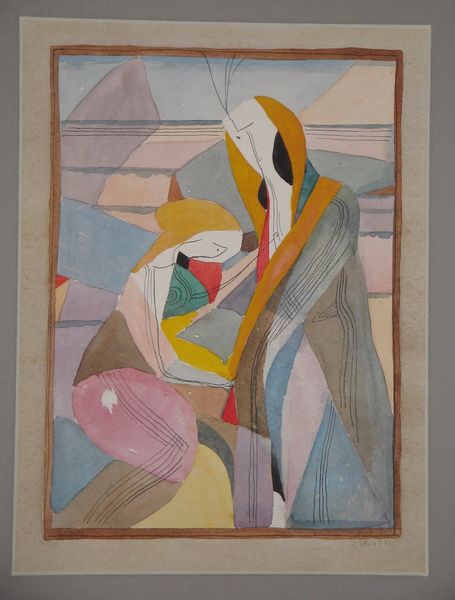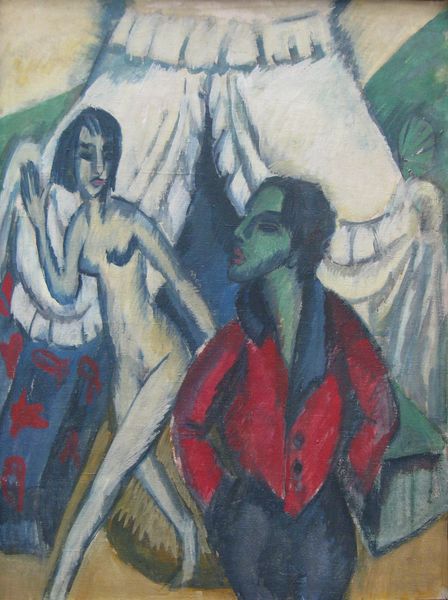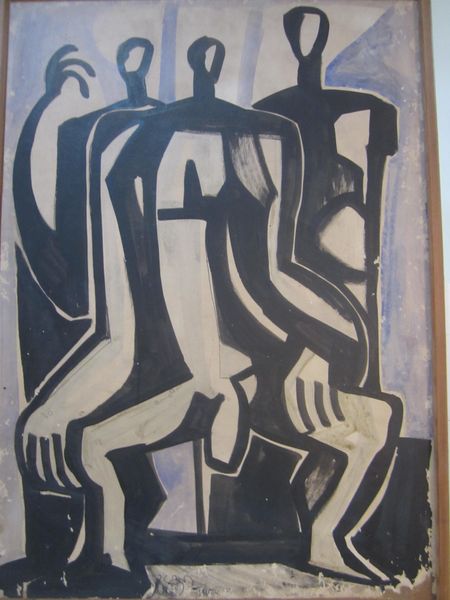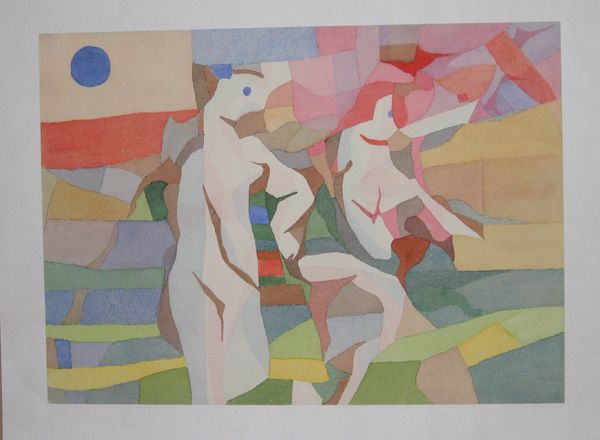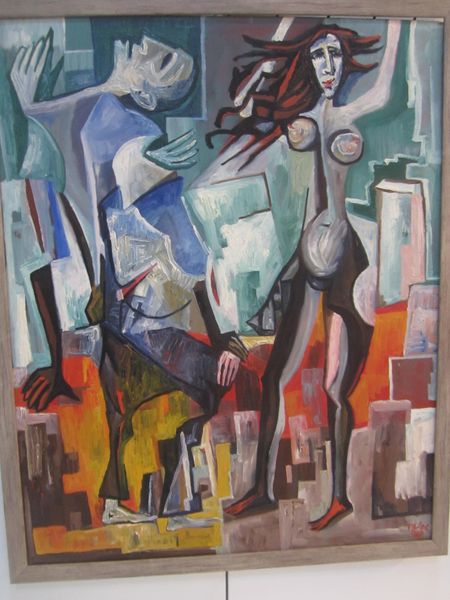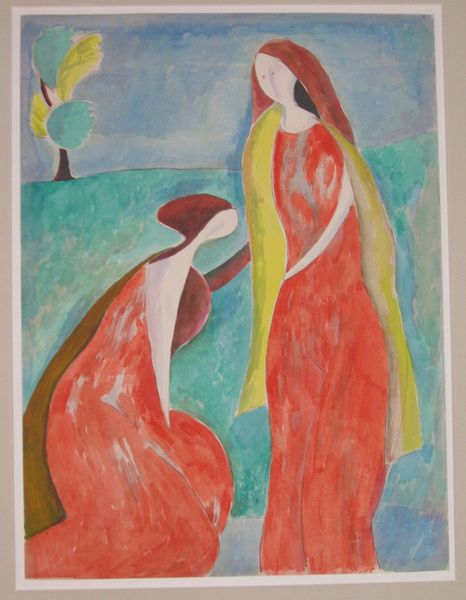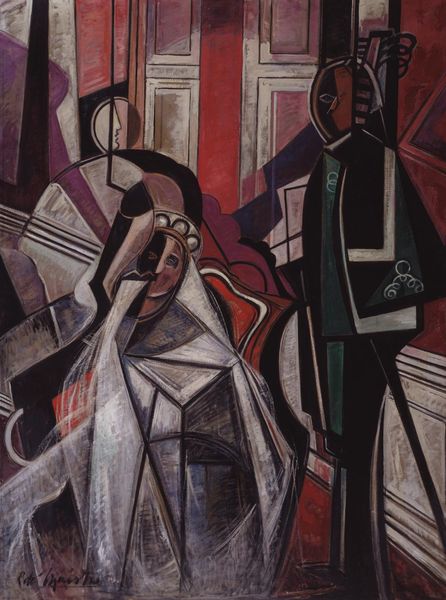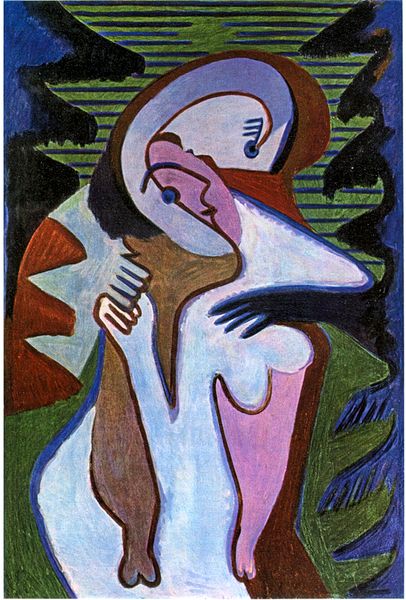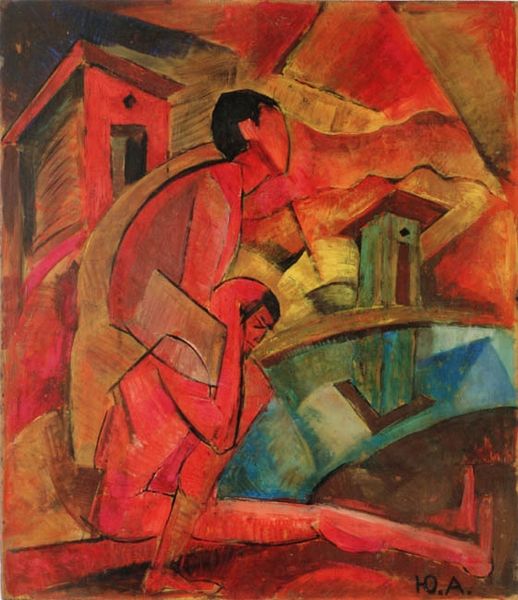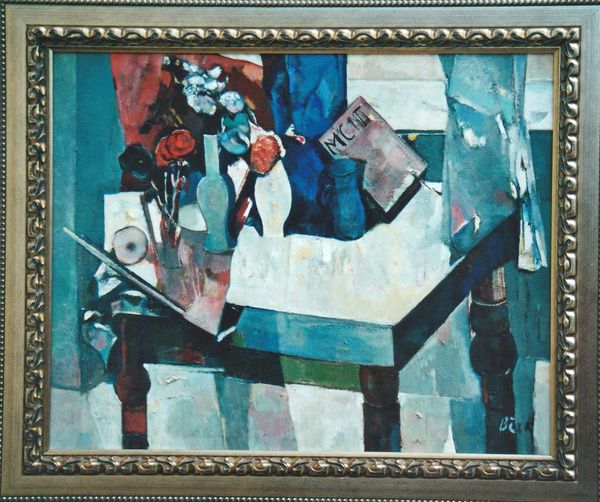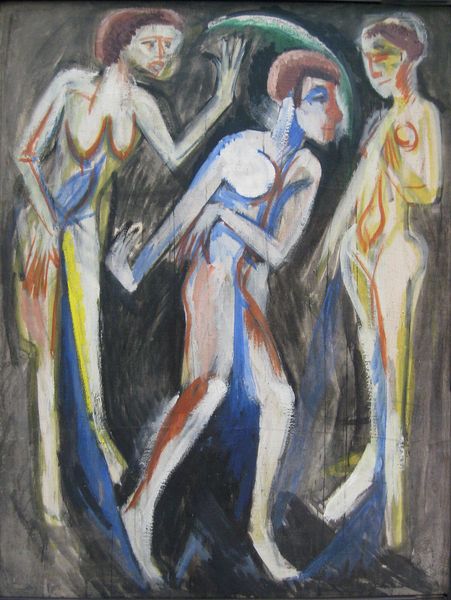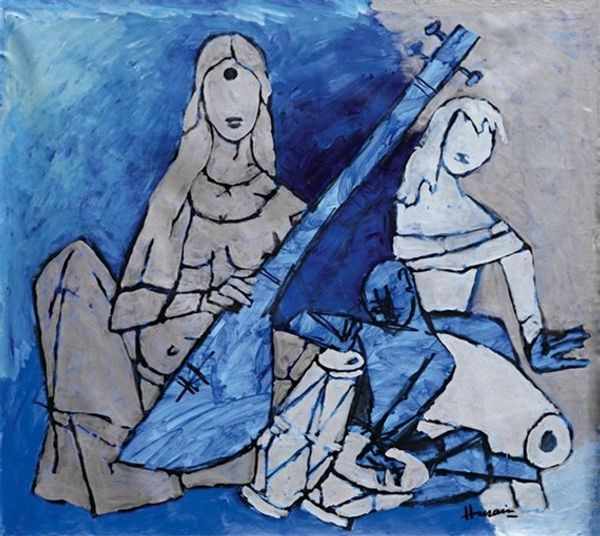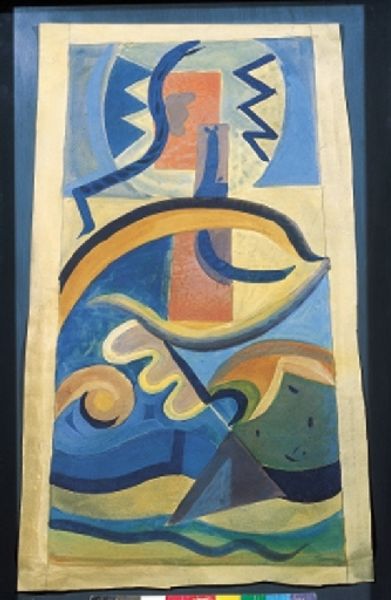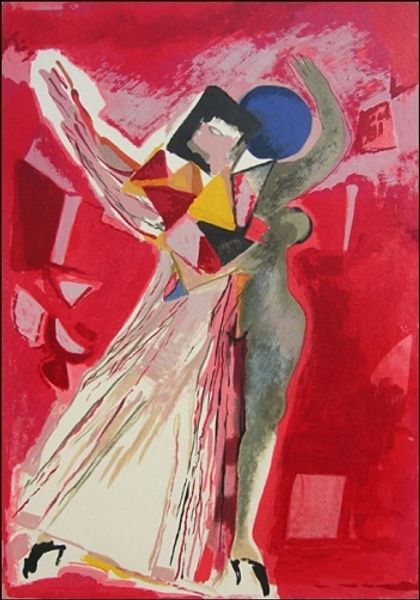
watercolor
abstract painting
water colours
figuration
watercolor
geometric
abstraction
modernism
watercolor
Copyright: Hryhorii Havrylenko,Fair Use
Curator: What a striking piece! This is Hryhorii Havrylenko's "Composition (Evangelist Matthew)," created in 1963 using watercolor. The artwork blends figuration with geometric abstraction. What's your initial impression? Editor: It feels… fractured. Like a stained-glass window disassembled and rearranged. The rigid geometric forms create a tension between the sacred subject matter and this distinctly modern visual language. Curator: Exactly! The fragmented shapes remind us of Byzantine mosaics. The image of an Evangelist evokes a long history of artistic representation, a legacy Havrylenko is consciously engaging with even as he reinterprets it. Consider the weight of tradition against the backdrop of modernist innovation. Editor: That tension speaks volumes. Given the historical context of 1963, the era’s political and social upheavals likely found their way into Havrylenko’s subconscious. He might be questioning established doctrines. Is this about the fragility of faith or its adaptability? Curator: Possibly both. Havrylenko utilizes familiar symbols—the evangelist, perhaps a representation of divine inspiration or a sacred message being recorded—but filters them through an abstract lens. Red signifies sacrifice and passion, while blue often represents spiritual truth. Notice how the light falls. Editor: The colors aren't purely symbolic either; they assert their materiality. I can feel the layering of the watercolors, the build-up of pigment. It draws my attention to the process itself. There’s an interesting commentary on artmaking here. Curator: His bold artistic choice transforms the Evangelist from a static religious icon into something dynamic and complex. We are confronted not with a definitive answer but a meditation on belief itself. Editor: And on artistic freedom. Working in Soviet Ukraine, such a distinctive artistic voice carries extra meaning. Curator: Absolutely. This painting isn’t simply a visual representation. It encapsulates complex layers of cultural and personal experience. Editor: Ultimately, it invites us to engage with themes that transcend time and cultural boundaries. It speaks of how images adapt to historical circumstances.
Comments
No comments
Be the first to comment and join the conversation on the ultimate creative platform.
